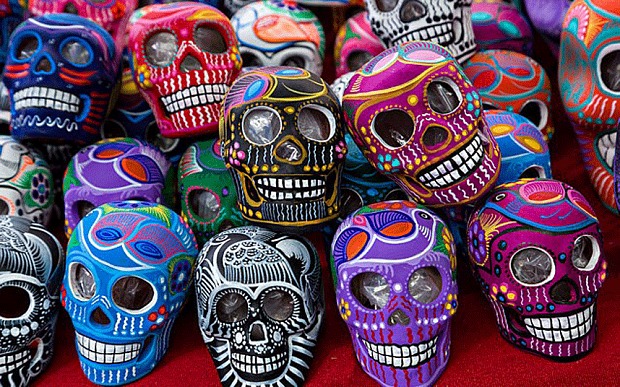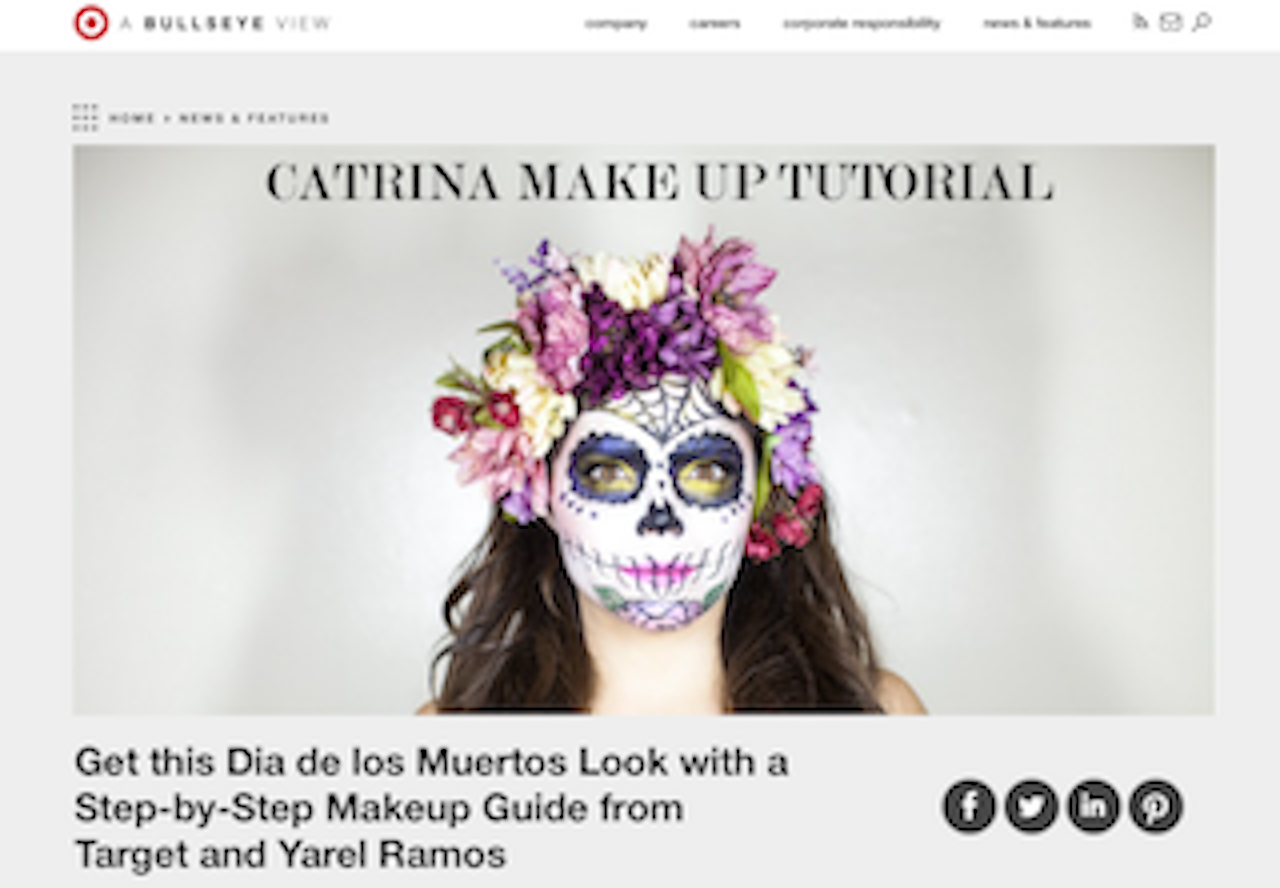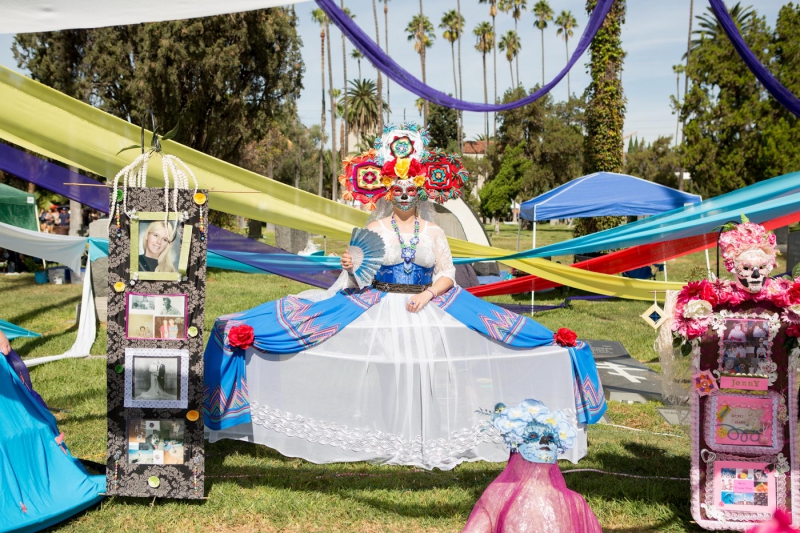
I know I’m a few months late on this post, but here it goes anyway!
In my work I often talk about the influence of Latino culture on the U.S. mainstream. A lot has been written on the subject and studies have been conducted. Latino food culture, music, movies, TV, the arts, sports, fashion/beauty, politics, etc., have all proliferated throughout the American landscape.
This influence has never been so pervasive as with the DÃa de los Muertos’ holiday and its celebrations, events, costumes, white painted faces, skulls, skeletons, and trinkets galore. In case you’re searching for that calavera-shaped fingernail file, they exist. Walmart and Target have you covered for a multitude of products and Catrina make-up tips as well.

Across the U.S. Latinos and non-Latinos engage side-by-side in Day of the Dead festivities. Yet it’s fair to question whether the holiday has been hijacked, trivialized and commoditized by the media and the mainstream at the expense of losing its true meaning to honor and remember deceased loved ones – as well as acknowledge the tenuous nature of mortality – albeit with a twist of humor and irony.
Here in L.A., DÃa de los Muertos-themed events such as those at Self Help Graphics & Art and Hollywood Forever Cemetery combine Mexican tradition in a tasteful, aesthetically artsy, contemporary setting. Displays of festive artwork, ornate altars and performance art are highly visual and magnetic, yet exoticized representations. Those that build the altars immerse in the holiday’s original meaning, some viewers come to learn what it’s all about, others seek the cool, hip party vibe.


Examples of tactless cultural insensitivity exist. Knott’s Scary Farm had a “Fiesta de los Muertos†Scare Zone themed after the sacred holiday that generated a petition for removal.
In 2013 Disney tried to trademark the DÃa de los Muertos phrase for a movie title and themed merchandise across multiple platforms; the backlash was fierce. Within days Change.org had collected 21,000 signatures. Soon after Disney dropped the trademark filing.
On Halloween night I watched theater and concert goers stream out of the Dorothy Chandler Pavilion, Taper and Ahmanson theaters, slowing mulling around the large vibrant-colored skull installations scattered out on the Plaza.
Some followed Grand Avenue Park down toward City Hall to view the impressive exhibit of 40 altars and art installations honoring the deceased. Instead of rushing down to the subterranean garages to their cars to beat the traffic, they were drawn to the highly personalized altars. People stopped to read about the holiday’s evolution through the 19th and early 20th century, its indigenous roots, and even some politicized messages.
Not surprising, the celebratory appeal of DÃa de los Muertos is prominent among mainstream “cultural creative” types that lean toward tolerance, diversity, and interact within multicultural communities by choice to begin with.
I’m curious how deep and wide this holiday will penetrate into the American heartland. What will the response be to the parading of lively skeletons, skulls and white painted faces throughout cities along America’s Christian Bible Belt where Hispanic communities are growing and their celebrations becoming more visible?
To my surprise, there was a festive Day of the Dead procession in Oklahoma City, where both Latinos and non-Latinos participated.
A few days after Halloween, I stopped at Vons for a few things and saw some leftover calavera cookies next to their pumpkin counterparts. Will DÃa de los Muertos replace our Halloween lore? Highly unlikely, though now a staple alongside Halloween, it will continue to thrive and evolve. The holiday is a melding of Aztec traditions and Catholicism; the current version in the U.S. layers on its own mainstream interpretation.
DÃa de los Muertos experiences will continue to evolve in the U.S. and worldwide. I even found events that took place in Prague. Few can resist the lure of such a visually engaging and mysterious holiday.
We struggle over its meaning, but those less immersed in the tradition may someday contemplate its broader significance; we’re here, then we’re gone. This reverent, yet lighter perspective of death might contain some valuable lessons.
And as the Aztec custom goes, I hope to transition into a butterfly when it’s my turn to bite the dust.